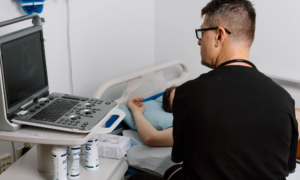Diabetes
Managing diabetes involves a holistic approach that combines lifestyle adjustments, medication, and advanced monitoring systems.
Medications: Managing diabetes involves a range of medications tailored to individual needs. Here’s an overview of commonly used medications:
- Insulin: Essential for type 1 diabetes and sometimes necessary for type 2 diabetes when other medications are insufficient. It comes in different types (rapid-acting, short-acting, intermediate-acting, long-acting) to mimic the body’s natural insulin production.
- Metformin: Typically the first-line medication for type 2 diabetes. It improves insulin sensitivity in tissues, reduces glucose production in the liver, and is associated with weight loss rather than weight gain.
- Sulfonylureas: Stimulate insulin release from the pancreas, helping to lower blood sugar levels. Examples include glyburide, glipizide, and glimepiride.
- DPP-4 Inhibitors: Block the enzyme dipeptidyl peptidase-4 (DPP-4), which breaks down incretin hormones that stimulate insulin release after meals. Examples include sitagliptin, saxagliptin, and linagliptin.
- GLP-1 Receptor Agonists: Mimic the action of incretin hormones to stimulate insulin release and reduce glucagon secretion, promoting satiety and weight loss. Examples include liraglutide, exenatide, and dulaglutide.
- SGLT-2 Inhibitors: Prevent the kidneys from reabsorbing glucose into the blood, causing excess glucose to be excreted in urine. This helps lower blood sugar levels and can also reduce cardiovascular risk. Examples include canagliflozin, dapagliflozin, and empagliflozin.
- Thiazolidinediones: Improve insulin sensitivity in tissues and reduce glucose production in the liver. Examples include pioglitazone and rosiglitazone.
- Alpha-glucosidase Inhibitors: Slow down the digestion of carbohydrates in the intestine, which helps to reduce spikes in blood sugar levels after meals. Examples include acarbose and miglitol.
- Meglitinides: Stimulate insulin release from the pancreas, similar to sulfonylureas but with a shorter duration of action. Examples include repaglinide and nateglinide.
Continuous Glucose Monitoring (CGM): This innovative technology provides real-time insights into glucose levels, offering a clearer picture of how the body responds to various factors such as food, exercise, and medication. CGM not only enhances accuracy in managing blood sugar levels but also helps minimize the risk of hypoglycemia and hyperglycemia through timely adjustments.
Remote Physiological Monitoring: Our remote monitoring services utilize cellular devices to track vital signs and glucose levels from the comfort of your home. This technology allows our healthcare team to monitor your health proactively, enabling early intervention and personalized adjustments to your treatment plan.
By combining these advanced monitoring tools with personalized care plans and ongoing support, we aim to empower you to live well with diabetes. Our goal is to provide you with the tools and knowledge necessary to effectively manage your condition and achieve optimal health outcomes. Discover how our integrated approach can make a difference in your diabetes management journey today.







